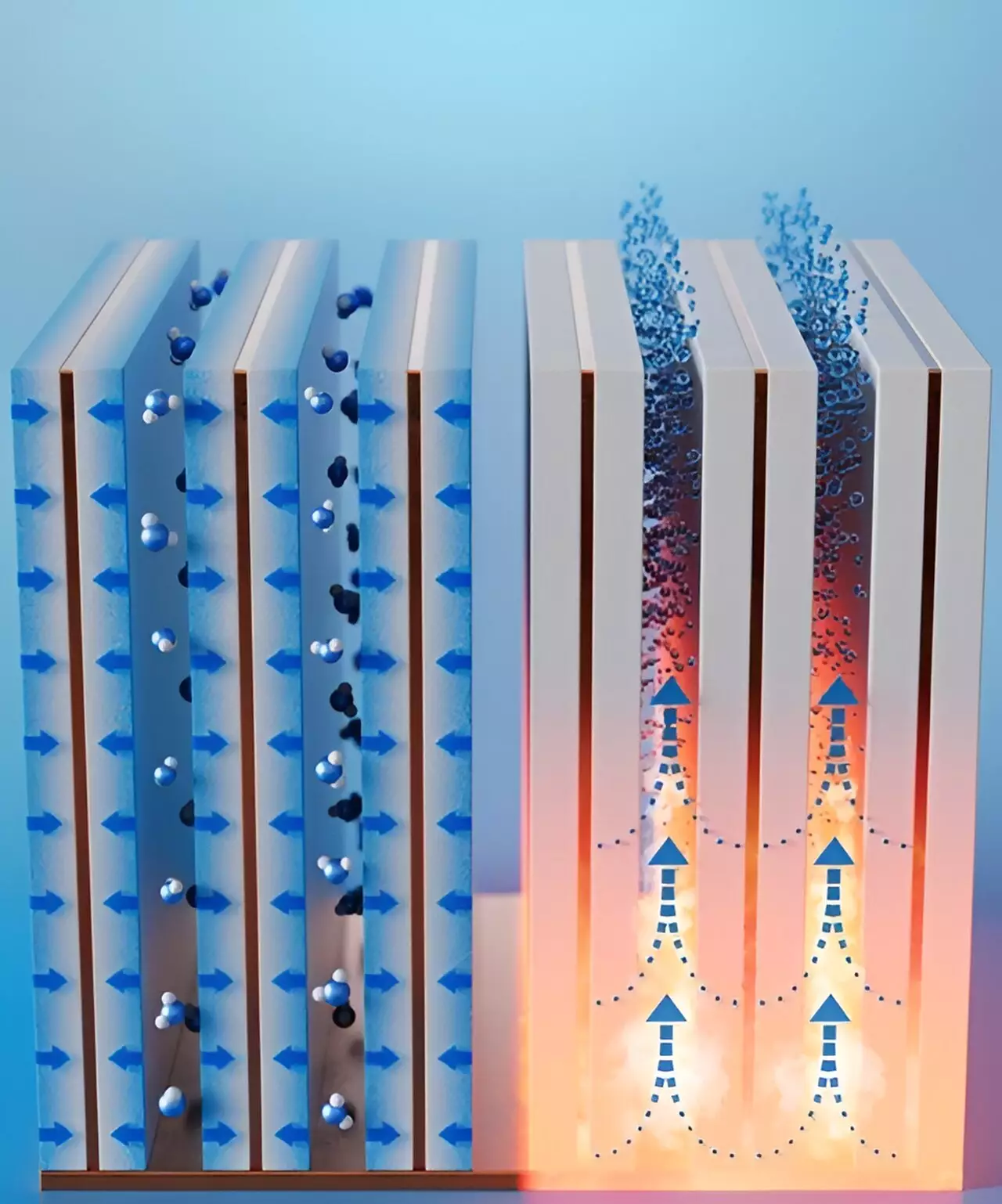Access to clean, safe water is a critical issue globally, with many regions facing challenges due to limited water resources. Local bodies of water play a significant role in providing water, but even in dry regions, there is some water vapor present in the air. Researchers have been exploring innovative solutions to harvest this humidity and generate potable water, especially in arid locations where water scarcity is a pressing concern.
In a recent study published in ACS Energy Letters, researchers have introduced a compact device designed to capture moisture from the air and produce clean water. The device features absorbent-coated fins that are capable of trapping moisture and then releasing it as potable water when heated. This prototype has the potential to address the growing demands for water in arid regions, offering a sustainable and efficient solution to water scarcity.
Traditionally, systems have been developed to trap dew or fog, collecting liquid water into containers. However, in dry areas where dew is scarce, alternative materials such as temperature-responsive hydrogels, metal-organic frameworks, or zeolites have been explored to extract moisture from the air. These absorbent materials can release water when heated, making them suitable for water harvesting applications.
The team of researchers, including Xiangyu Li, Bachir El Fil, and their colleagues, took a different approach by designing water-adsorbent fins that prioritize material properties and practicality. By sandwiching a copper sheet between copper foams coated in a commercially available zeolite, the researchers created thin adsorbent fins that are compact and efficient in harvesting water. This co-design strategy focused on optimizing the adsorption bed with material properties, resulting in a device that can quickly capture water from the air.
To demonstrate the effectiveness of the device, the researchers created a prototype with 10 small adsorbent fins arranged side by side on a copper base plate. These fins were spaced about 2 millimeters apart, allowing for maximum moisture capture from air with low relative humidity. After an hour, the fins reached saturation and released the trapped moisture when the base plate reached 363 Fahrenheit. By extrapolating the data to 24 collection-release cycles, the researchers estimated that 1 liter of absorbent coating on the fins could produce up to 1.3 liters of potable water per day in air with 30% relative humidity.
The research highlights the opportunity for rapid moisture capture and water harvesting from dry air, multiple times per day. With further development and optimization, this innovative system could be integrated into existing infrastructures, such as buildings or transportation vehicles, that produce waste heat. This integration would provide a cost-effective and sustainable option for generating clean water in arid regions, where water scarcity is a significant challenge.
The development of this compact water harvesting device represents a significant step forward in addressing water scarcity issues. By harnessing the moisture present in the air, researchers have created a solution that is efficient, scalable, and environmentally friendly. With continued innovation and implementation, this technology has the potential to revolutionize water harvesting and provide a sustainable source of clean water for communities facing water scarcity around the world.


Leave a Reply